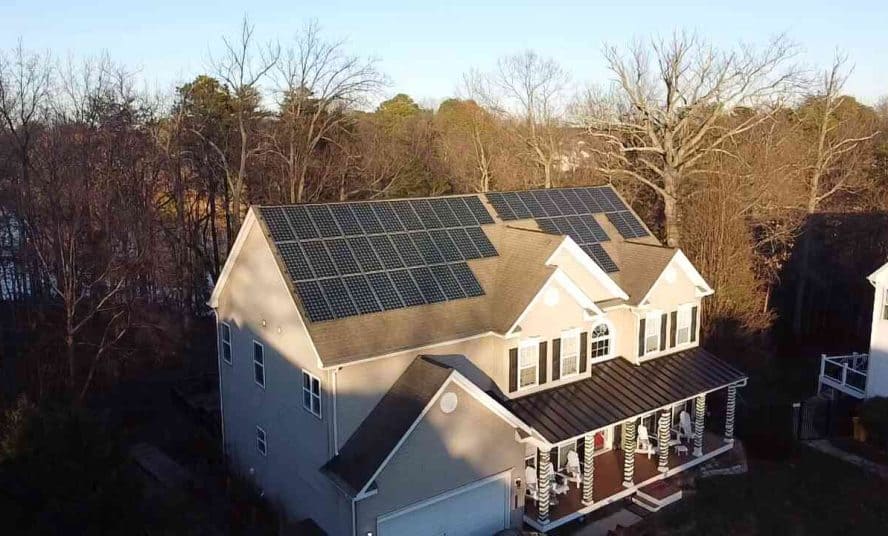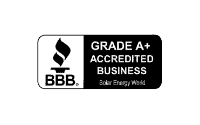The move toward green energy is rapidly advancing, and in this journey, both Maryland and Washington D.C. are spotlighting solar power. Beyond serving as a sustainable energy choice, solar energy has become a cornerstone in these regions’ disaster preparedness strategies. This article will delve into how the nation’s capital, alongside its neighboring state, is harnessing solar power not only for everyday use but also as a crucial tool for preparing against unforeseen disasters.
Solar Energy in Washington D.C. and Maryland
In recent years, Washington D.C. and Maryland have positioned themselves at the forefront of the renewable energy movement, specifically emphasizing solar power. The landscape of both areas is gradually changing, reflecting a notable shift toward sustainable energy sources.
Solar Energy’s Presence in Washington D.C. and Maryland
The nation’s capital and the state of Maryland are lighting up with solar panels. There has been a remarkable surge in solar energy adoption in both areas. This is evident from rooftops gleaming with solar panels in residential and commercial areas, illustrating a conscious shift toward sustainable energy.
The increase in solar adoption in D.C. and Maryland is driven by the community. Both areas house an ever-growing community of eco-conscious residents, from young professionals to families, all eager to reduce their carbon footprints and contribute to a cleaner environment. The significant presence of environmental NGOs and think tanks also amplifies awareness and advocacy for renewable energy solutions in both regions.
Local Government Policies Supporting Solar Energy Adoption
Both D.C. and Maryland’s local governments have recognized the potential of solar energy, enacting policies to support its adoption due to its environmental and economic benefits:
- Tax Incentives: Significant tax credits are available to homeowners and businesses in both D.C. and Maryland, easing the financial burden and encouraging long-term savings through reduced reliance on traditional electricity sources.
- Rebates and Grants: Various rebate programs are available for residential and commercial solar installations in both regions, making the initial costs of switching to solar more affordable.
- Promotion and Education: In both Washington D.C. and Maryland, local governments collaborate with NGOs to organize workshops, seminars, and community outreach programs aimed at educating residents about the benefits of solar energy, its role in disaster preparedness, and the financial incentives available.
With ambitious renewable energy targets set for the coming years, both Washington D.C. and Maryland are reinforcing their commitment to a greener future. Integrating solar energy into their policy frameworks and landscapes, they stand as models of how regions can embrace sustainability and resilience.
How Solar Energy Contributes to Disaster Preparedness
Washington D.C.’s increasing investment in solar energy isn’t just a step towards sustainability. It’s also a strategic move for resilience against potential calamities. Let’s dive deeper into this correlation:
Potential Disaster Scenarios in Washington D.C.
The diverse set of challenges D.C. might face can vary from natural to man-made:
- Extreme Weather Events: Climate change has intensified the frequency and severity of storms. In D.C., this could mean heavier snowfalls, rainstorms, or even heat waves leading to blackouts.
- Cybersecurity Threats: Our power grid, being heavily digitized, is susceptible to cyber-attacks. These threats can cause massive grid failures, leaving vast areas without power.
- Infrastructure Failures: Aging infrastructure or unexpected equipment malfunctions can lead to sudden power outages.
Given these scenarios, it’s evident that a robust disaster preparedness plan is imperative. And that’s where solar energy comes into play.
Potential Disaster Scenarios in Maryland
Like Washington D.C., Maryland faces its unique set of challenges that underscore the need for effective disaster preparedness strategies:
- Hurricane-Induced Disruptions: Maryland, with its extensive shoreline, is no stranger to hurricanes and tropical storms. These weather events often lead to damaging winds and flooding, causing widespread power outages. The integration of solar energy, especially when paired with solar batteries, provides a resilient power source that can help maintain electricity during and after such events.
- Extreme Weather Fluctuations: The state experiences a range of extreme weather conditions, from sweltering heatwaves to crippling winter storms. These conditions can strain the conventional power grid, leading to electricity shortages.
- Aging Infrastructure: Much like the rest of the country, Maryland’s energy infrastructure is subject to the wear and tear of time. Upgrades are ongoing, but the risk of failure remains—a risk that solar energy can help mitigate.
The benefits of solar battery systems in this context cannot be overstressed. They store excess energy generated during sunny days, which can be crucial during power cuts caused by hurricanes or other disasters. This capability not only provides energy security to homeowners and businesses but also lessens the load on the grid during peak demand, thus enhancing overall community resilience.
How Solar Energy Can Provide Resilience During Disasters
The decentralized nature of solar installations is its strength during disasters:
- Self-sufficiency: Unlike traditional power sources, solar panels don’t rely on a distant power plant. The energy is generated right where it’s consumed, ensuring fewer points of failure.
- Storage Solutions: Modern solar installations in D.C. can be paired with battery storage systems. This means excess energy generated during the day is stored and can be used during the night or during power outages, ensuring uninterrupted power supply.
- Modular Design: Solar systems are modular. Even if a part of the system is damaged, the rest can still function, unlike grid systems where one significant failure can halt the entire operation.
Real-life Instances
The merits of solar energy during disasters aren’t just theoretical. Real-world events offer testament:
- Hurricanes in Puerto Rico: Post-Hurricane Maria, much of the island’s traditional power infrastructure was decimated. However, buildings equipped with solar panels and batteries were often the first to regain power, some never losing it at all.
- Blackouts in California: During the rolling blackouts caused by wildfires, homes with solar panels and battery storage systems managed to maintain power, making them safe havens for their occupants.
By analyzing these scenarios, it becomes clear that solar panels in Washington D.C. aren’t just an environmentally-friendly choice but also a strategic one, ensuring the city’s resilience in the face of challenges.
Solar Panels Are Your Ally in Disaster Preparedness
The versatility and resilience of solar panels go beyond mere electricity generation. They stand as pillars of independence and security, especially when nature or unforeseen circumstances strike. Let’s delve deeper into the roles solar panels play in ensuring preparedness against adversities:
How Solar Panels Contribute to Energy Independence
Solar panels allow homeowners and businesses to generate their electricity. This decentralized model means you’re not wholly dependent on large power plants miles away from your location.
When the central grid goes down, homes with solar panels have a better chance of maintaining power. This not only provides comfort but can be vital, especially if someone in the home relies on electrically powered medical equipment.
Over time, as you generate more of your electricity, you’ll notice significant savings on your energy bills. This financial freedom is especially helpful in post-disaster scenarios where every penny can count.
The Role of Battery Storage Systems for Continuous Power Supply
While the sun is a consistent energy source, it’s not always shining. Battery storage systems capture and store excess energy produced during peak sun hours.
During power outages, these batteries kick in, ensuring that households continue to have power. This seamless transition can be essential for preserving food, communicating with loved ones, or maintaining a safe indoor environment during extreme weather conditions.
Modern battery systems often come with smart management systems, allowing users to optimize energy consumption and prioritize essential devices or appliances during a power shortage.
Importance of Off-grid Capabilities in Disaster Situations
An off-grid solar system is entirely independent of the central power grid. This independence ensures consistent power availability, regardless of what’s happening in the broader network.
In a disaster, communications and safety systems are paramount. Being off-grid ensures these systems remain operational, providing homeowners with crucial information and security.
Knowing that your home will have power, irrespective of grid failures, provides unparalleled peace of mind. In stressful disaster scenarios, having one less thing to worry about can make a significant difference.
Solar panels, paired with battery storage systems and off-grid capabilities, can transform a home into a self-sufficient oasis. In the face of adversity, these systems prove that solar energy and disaster preparedness in Washington D.C. are intrinsically linked, offering a shield of resilience and security.
Is Solar Energy Worth Investing for Disaster Preparedness in Washington D.C. and Maryland?
In a rapidly changing environment, it’s crucial to ask: Does the investment in solar panels go beyond just an eco-friendly decision? How does it fare in terms of disaster preparedness? Let’s dissect this further:
Comparing Costs
- Initial Investment vs. Long-term Savings: There’s an upfront cost associated with solar panel installation. However, considering it as a long-term investment provides a clearer picture. Over a span of years, the consistent savings from decreased electricity bills often outweigh the initial setup costs.
- Cost of Being Unprepared: It’s important to factor in the potential financial impacts of being unprepared for a disaster. Prolonged power outages can lead to the loss of perishable goods, the need for alternative accommodations, or even unforeseen emergencies.
Available Incentives and Subsidies
Washington D.C.’s push towards a greener environment has birthed various incentive programs. These are designed to ease the financial load for homeowners wanting to switch to solar energy.
Similarly, Maryland is proactive in offering incentives to its residents. Programs like the Residential Clean Energy Rebate Program and the Solar Renewable Energy Credit (SREC) market not only provide upfront savings but also enable homeowners to earn income from the excess power their systems generate. Maryland also offers property tax exemptions on the increased home value as a result of solar installations, making solar upgrades more financially attractive.
Beyond rebates and subsidies, residents in D.C. can avail tax incentives related to solar panel installations, significantly decreasing the effective cost and making it more accessible to a larger audience. To learn more about Washington D.C.’s Solar Incentives, Grants, Rebates, and Tax Credits visit our Washington D.C. Incentives Guide.
The Dual Advantage
Solar panels can substantially reduce monthly electricity bills. These recurring savings not only cover the initial setup costs but accumulate into significant savings over the years.
Plus, there is an unparalleled advantage of having solar panels during unforeseen weather or other disruptions. A self-sufficient power source can be a game-changer in such scenarios, providing both convenience and essential support.
Evaluating the dual benefits of financial and practical preparedness, it’s evident that solar energy is a sound investment for those looking to fortify their homes against potential disruptions in Washington D.C. This proactive approach ensures both continuous power and considerable savings, making it an attractive proposition for homeowners.
Solar Energy for a Secure, Sustainable Future
In the fast-changing landscape of the 21st century, where disasters seem more frequent and intense, preparedness is key. Solar energy offers both an eco-friendly power source and a reliable backup during emergencies. As the nation’s capital, Washington D.C. and Maryland stands as a beacon, leading the way in merging sustainability with safety.
Embrace solar energy for safety, savings, and sustainability. Every watt produced from your roof is a step towards a brighter, more resilient future. So, why wait? Contact one of our solar experts to join the solar revolution in D.C. or Maryland today.





















